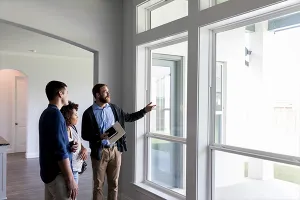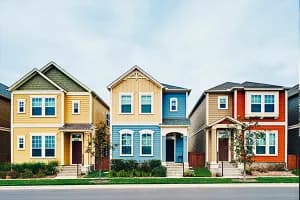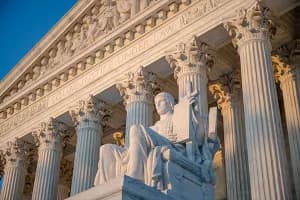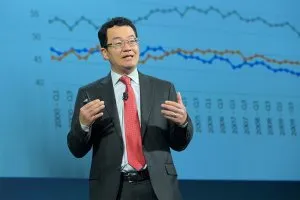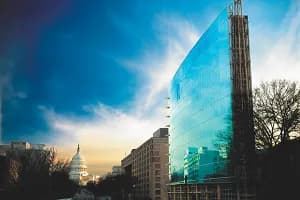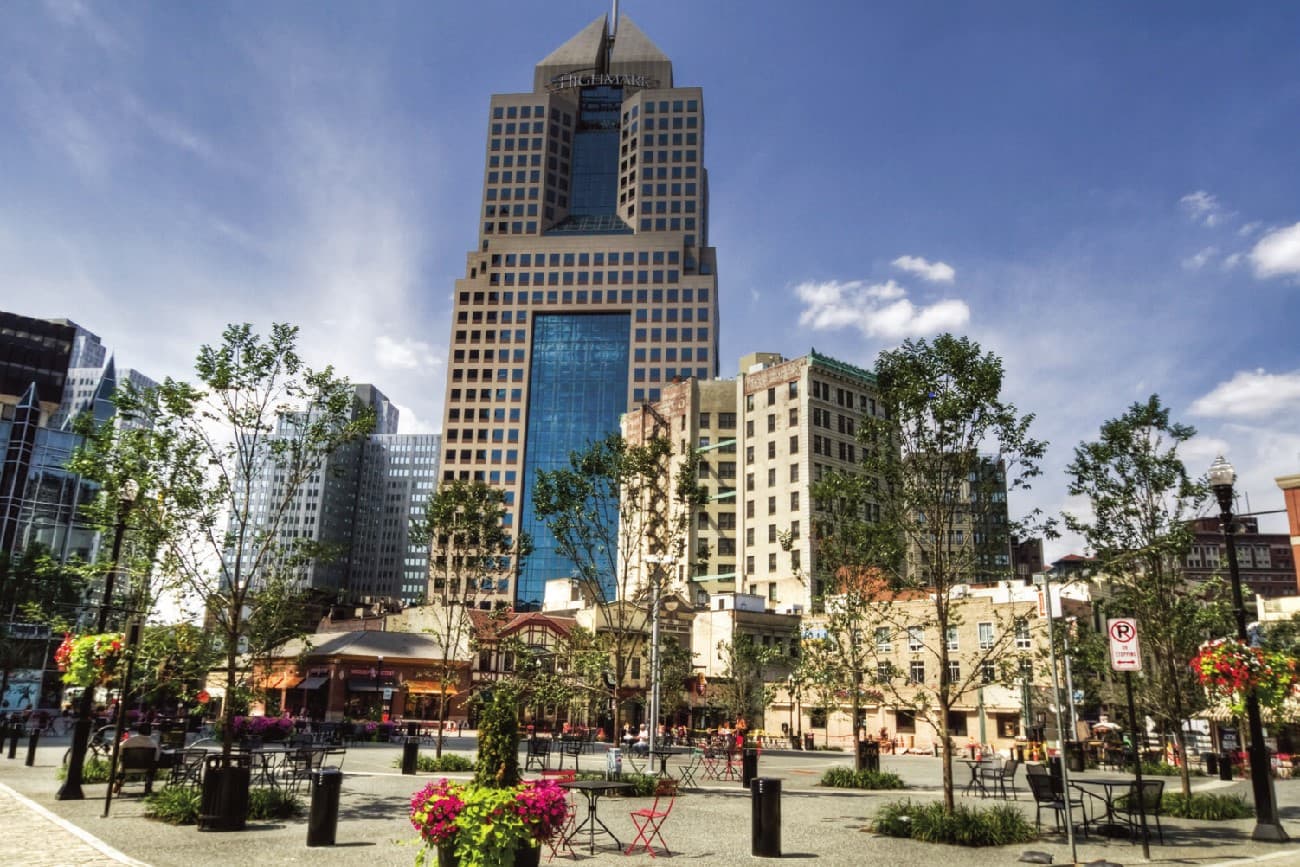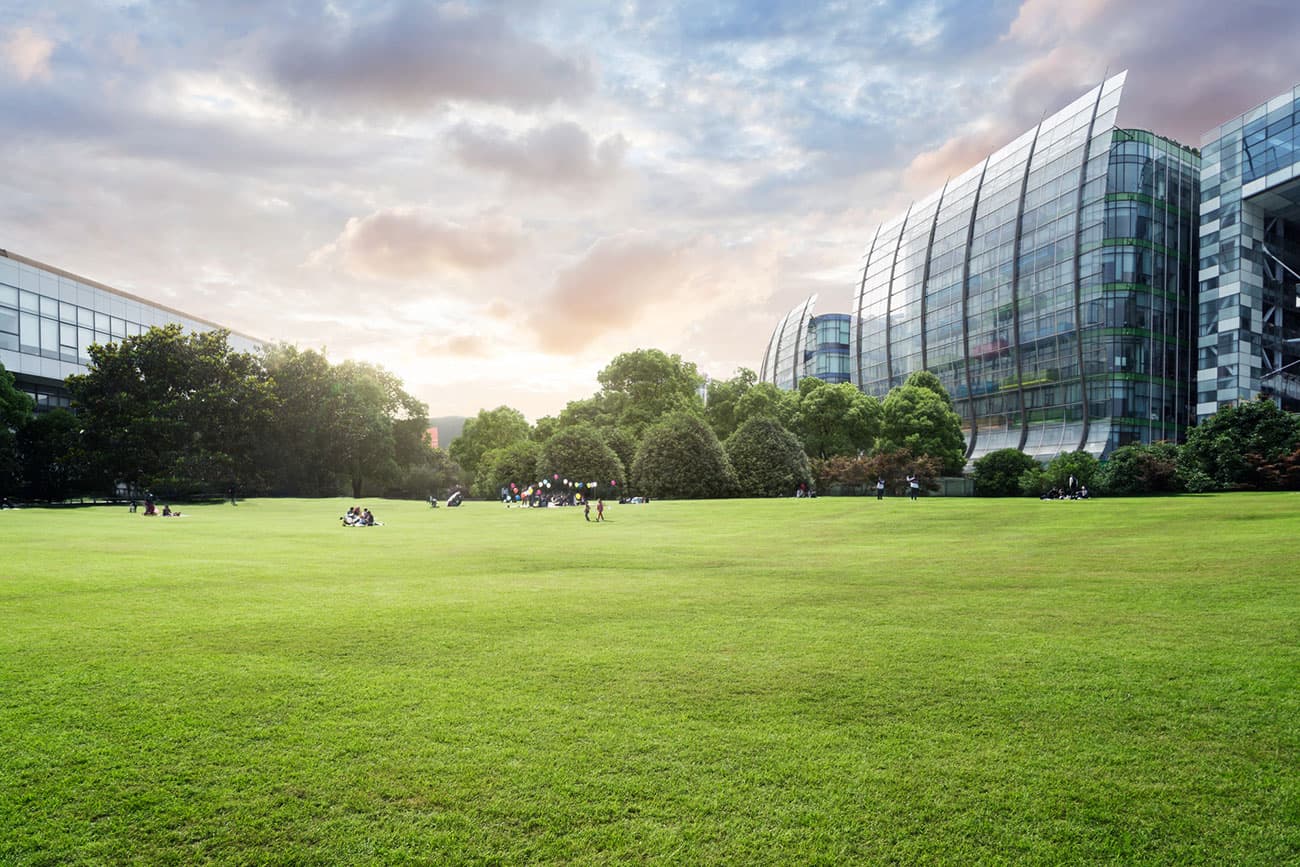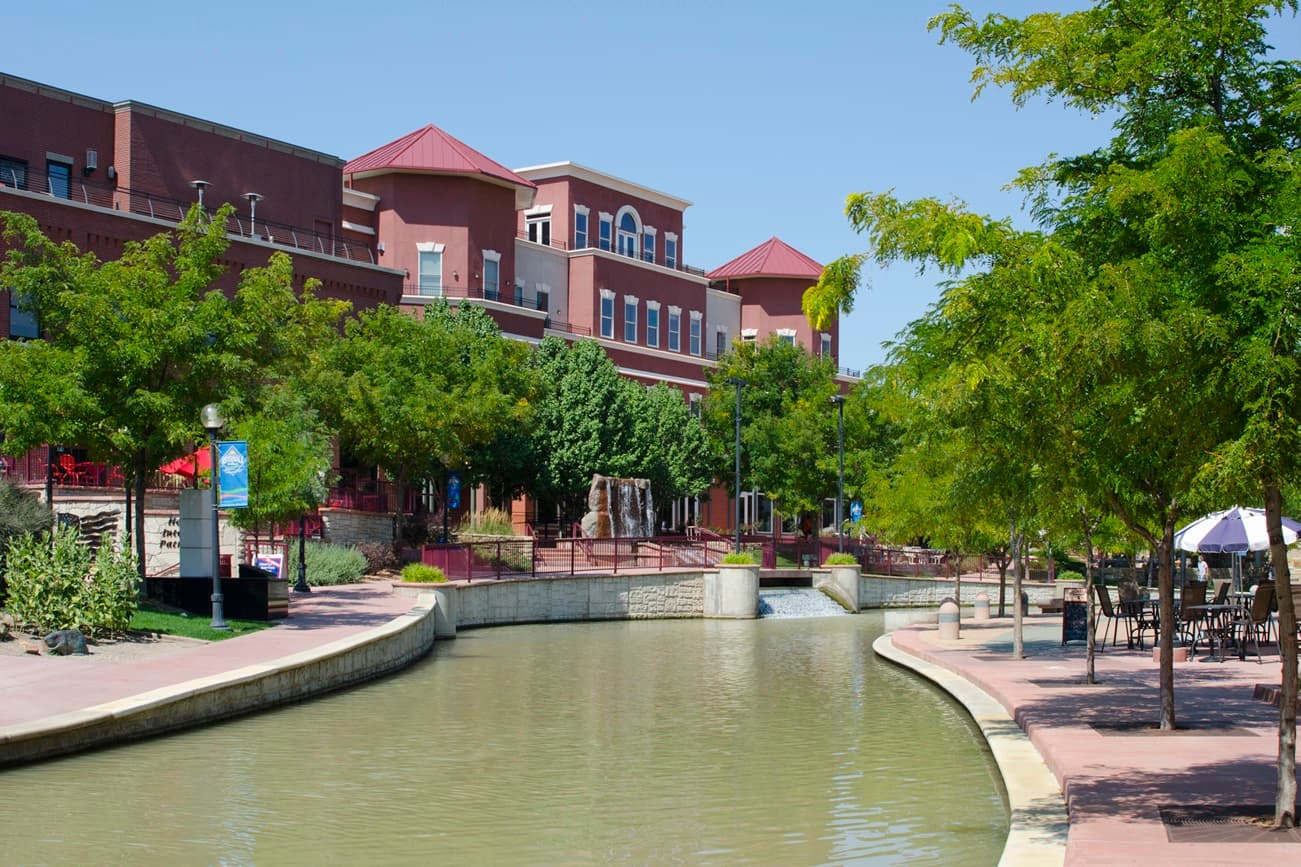Employing zoning codes against raging wildfires, extreme heat, intense storms, sea level rise and other impacts of climate change may seem on the surface like a mild-mannered approach to a crisis, but zoning can be a powerful tool.

Zoning dictates where and how nearly everything in the United States is built.
“Zoning dictates where and how nearly everything in the United States is built, so it has a significant impact on the environment,” said Sara Bronin, a professor in the city and regional planning and real estate departments at Cornell University in Ithaca, N.Y. “Depending on how a local government articulates it, zoning can protect communities from climate impacts and encourage a community to take steps to mitigate their environmental impact.”
The United States has established a goal of using 100 percent clean electricity by 2035 and to achieve net-zero carbon emissions by 2050. The Energy Department estimates that 40 percent of our nation’s total energy use, 70 percent of electricity use and 40 percent of total emissions come from homes and buildings. While some of these issues can be addressed with building codes and other mandates, zoning codes have an important role to play.
“Lots of policies at various levels of government all need to work in concert to drive down energy consumption,” said Arah Schuur, executive director of the Northeast Energy Efficiency Partnerships (NEEP), a Boston-based nonprofit organization that partners with other organizations to accelerate energy efficiency and electrification in buildings. “Communities often lead in those policies faster than the state government and can use their local authority to drive faster progress.”
Zoning changes are increasingly used as a complement to state-level policies related to energy use, Schuur said.
While they’re not a panacea, zoning codes can be used to encourage, incentivize or regulate actions that impact the environment, said Brian Ross, vice president of the renewable energy program at the Great Plains Institute in Minneapolis.
Zoning codes can address long-term planning that can contribute to walkable communities that rely less on cars, water usage, landscaping and waste management, all of which can mitigate climate risk.
Urban Planning and Sustainability
Traditional zoning tends to encourage large-lot sprawl that pushes development into farmlands and forests, which ends up destroying the local food supply and trees that clean our air,” Bronin said. “Making changes in residential development patterns can encourage even modestly more dense communities, which can reduce emissions because residents become less dependent on cars.”
Zoning changes impact transportation and both commercial and residential buildings, two of the biggest sectors that contribute to energy use.
“Communities often find talking about housing easier than talking about climate change because housing is tangible, local and immediate,” said Evan Manvel, a climate mitigation planner for the Oregon Department of Land Conservation and Development in Salem, Ore. “The Climate-Friendly and Equitable Communities project, which is being implemented now, focuses in part on making it legal to build taller buildings and to establish a minimum density requirement in some communities to make it easier for transit to serve the neighborhood.”
Eliminating single-family, home-only requirements in those communities can encourage density for better energy efficiency, but Manvel said that parking reform is also a big piece of designing climate-friendly communities.
“Parking lots push buildings apart and make communities less walkable,” Manvel said. Less walkability means more wasted energy.
In one study about zoning and urban microclimates, researchers from several universities looked at how cities could mitigate extreme heat, including with parking reform.
“The way cities work isn’t simple,” said Mehdi P. Heris, one of the study authors and an assistant professor in Urban Policy and Planning at Hunter College in New York City. “You can’t just plant more trees. You need a comprehensive plan to manage microclimates that includes better shade, more trees, especially mature trees, and different parking lot locations to make a difference to urban heat.”

The researchers found that open parking lots increase the near-surface air temperature, so taller parking structures are desirable to reduce the number of lots. In addition, they found that wind direction and speed can be improved with grid patterns for streets, and that shade from taller buildings and trees mitigates the heat island effect. Their study found that zoning can help the health and comfort of residents.
Regulations around landscape and shade can be comprehensive and have a variety of impacts.
“Regulations around landscape and shade can be comprehensive and have a variety of impacts,” Heris said. “For example, in Tucson, Ariz., there are landscaping regulations that require the use of native plants, which reduce water use.”
Other potential code changes include how much permeable surface must be in certain areas to reduce heat islands and for stormwater management, he said.
Energy Policies and Zoning
Perhaps the boldest use of zoning codes to drive change and reduce the carbon footprint of buildings is the fossil fuel ban in New York and in 10 pilot communities in Massachusetts, Schuur said. In New York City, new construction buildings must be all-electric beginning in 2024. New York State passed a similar mandate for new buildings that will begin in 2026.
So far, the fossil fuel bans are just for new construction, but Schuur said that eventually there could be requirements for existing buildings to be retrofit.
“People are watching Massachusetts and New York to monitor their metrics to see what impact the fossil fuel bans will have on these communities, such as how new construction is affected,” Schuur said. “The drive to electrification will be led by cities and communities, then it will spread to state governments.”
Zoning has an important role to play in the electrification of transportation, too.
“Zoning is critical to the transformation of the electric vehicle market because it’s dependent on access to charging opportunities,” Ross said. “Right now, 80 percent of charging happens at home, but what if there’s no charging equipment there, such as in a rental community? Lower-income areas are most vulnerable to this and they need an option to benefit from the electrification of transportation.”
Building codes can require EV charging stations, but local control over those codes is not always allowed, Ross said. “If we want to futureproof developments and we want all new commercial buildings to have an EV charging station, the only way to do that in those areas is with a zoning ordinance.”

Many communities are interested in EVs as a long-term goal to diminish emissions and increase decarbonization through electrification, which means they’re open to using zoning ordinances to increase EV infrastructure, Ross said.
Zoning ordinances will increase EV infrastructure and impact solar farms and ground installation of solar panels.
“Cities need to consider EV charging from a land-use standpoint,” he said. “Fast chargers can create traffic because they are kind of like a gas station and cars can block traffic while they’re waiting for their turn. EV chargers are often installed as a bank of chargers, which can also potentially change traffic patterns. They’re not the same as a gas station because they don’t have tanker deliveries or underground storage, but they may need some special attention.”
Some states, such as New Jersey, mandate that every jurisdiction must have a zoning code that includes EV chargers in all new construction. Ross recommends the New York State Energy Research and Development Authority’s (NYSERDA) EV guidance for best practices on regulation and infrastructure.
“Hartford, Conn., was the first city to require a certain number of parking spaces to have EV charging stations and to eliminate minimum parking requirements,” Bronin said. “The city also enables property owners to install solar panels unless it has a significant impact on the historically significant position of the property.”
Zoning codes primarily impact solar farms and ground installations of solar panels, Ross said.
The National Renewable Energy Laboratory (NREL) has a database of ordinances for wind and solar energy projects to demonstrate best practices.
“Zoning codes can be used to encourage electrification,” Schuur said. “For example, areas that don’t ban fossil fuel but want to encourage electric-only buildings can offer a density bonus to developers who build an all-electric property.”
In Somerville, Mass., a new green zoning code passed in 2019 includes LEED requirements for new construction such as green roofs and a “Green Score” that is calculated based on landscaping to reduce heat island effects, stormwater runoff and improve the air quality.
Zoning to Mitigate Natural Disasters
While wildfires, tornados, hurricanes, floods and extreme temperatures cause the destruction of lives and property, many communities use zoning codes to prevent disasters and to repair neighborhoods. In 2018, a wildfire destroyed 95 percent of the town of Paradise, Calif., and killed at least 85 people. The recovery process for the town, which continues today, required both temporary ordinance changes that will sunset when the recovery is complete, and permanent changes that will make the area more resilient to wildfires, said Susan Hartman, community development director for planning and wastewater for the town of Paradise.
“The two big changes that we had to make temporarily were to allow people to live in RVs as interim housing on their property through April 2024,” Hartman said. “Some people are still waiting for payments to rebuild their homes, especially if their insurance wasn’t enough. We also allowed for ‘laydown yards’ for staging areas for the materials needed for the massive utility repairs.”
Some commercial and residential areas needed to be rezoned.
“Paradise is an old mining town and the last zoning changes were made around 1979,” Hartman said. “In many instances, older residences were located in what was later zoned for commercial use, so we waived some of the restrictions so people can rebuild on their property.”
To be more resilient to wildfires, Paradise passed zoning ordinances prohibiting the use of railroad ties for landscaping or other projects because they are soaked in creosote and contributed to the rapid spread of the fire.
The zoning code now requires a five-foot circle of landscape with noncombustible materials around the perimeter of every house.
“The zoning code now requires a five-foot circle of landscape with noncombustible materials around the perimeter of every house, so only noncombustible fencing is allowed,” Hartman said. “We also increased the allowable size of ADUs [accessory dwelling units] because of the need for housing for multigenerational families and to use as temporary workforce housing for people doing tree removal and utility work.”
In addition, Paradise has a zoning overlay that will allow double the density in the commercial corridor once a sewer system is installed to allow for multifamily development.
“We want to pull more residents away from the canyons and into town or at least closer to evacuation routes,” Hartman said.
The zoning code in Paradise is approved by a local council without requiring approval by the county and many of the ordinance changes were voted on by residents, Hartman said. Part of the process of making changes to the zoning code has been to educate homeowners and commercial property owners about how to live in a rural area that’s prone to fire, especially since 50 percent of Paradise residents today were not there during the fire.
Paradise can serve as a model for communities that face natural disasters — both for the aftermath and prevention.
“Every community will face some water challenge, whether it’s a flood, sea level rise, too much precipitation or a drought,” Bronin said.
Zoning codes are being updated in many locations to address water issues.
Zoning codes are being updated in many locations to address water issues. For example, in Norfolk, Va., zoning changes introduced in 2018 incentivize development on higher ground and enhance flood resilience.
“Zoning can be used in waterfront areas to reduce flood risk and mitigate the impact of sea level rise by requiring buildings in that zone to be built on a higher elevation or at least to have their utilities elevated to avoid flood damage,” Heris said.
Zoning codes can be used in a variety of ways around water use, such as to set standards that require native plants that use less water, to encourage or require infrastructure to manage stormwater or to mandate buffers to protect wildlife habitats, Bronin said.
Lessons Learned When Zoning for Sustainability
Zoning can quickly become a politically heated topic, Manvel said.
“To overcome opposition to some of the climate-friendly zoning recommendations, we’ve demonstrated our willingness to listen to the concerns of people in every community,” Manvel said. “We started out with a more aggressive plan and scaled back some. We’ve learned to be flexible with local governments because we realize they have limited resources and lots of priorities. If we get to 80 percent of our goal now, we can always try again later to go farther.”
Manvel said Oregon works hard to bring resources and funding to local governments to help them make changes to meet climate goals.
In Paradise, the disastrous fire led to a new understanding of the importance of property insurance and what can be done to mitigate risk, Hartman said.
“We’ve seen cancelled insurance and astronomical rate hikes, so our focus is on zoning codes and building code adjustments to make our community as safe as possible for everyone and to demonstrate that to insurance companies,” Hartman said. “We adopted standards so that every house will meet the criteria to be certified as a wildfire resistant home.”
If a community cannot get insurance, then it can’t recover, Hartman added.
REALTORS® Role in Zoning for Sustainability
Zoning changes often involve a task force and sessions for public input, which is where REALTORS® can provide expertise, Bronin said. “Agents are familiar with people’s changing preferences and likely to be seeing that people want a more sustainable lifestyle.”
City leaders could use the insights of commercial and residential real estate agents to help drive zoning changes and guide homebuyers to experts on sustainable residences. “REALTORS® can also be champions of efficient and low-carbon buildings in their communities, sell around that concept, and provide information about the financial value of these buildings for owners and operators,” Schuur said. “For example, an all-electric, single-family home is cheaper to build and costs less to run. People should be educated on the operational cost savings that come with energy efficiency.”
Schuur recently saw a real estate listing in Massachusetts that read, “No fossil fuel here — this is the clean house of the future.”
Making measurable progress to reduce carbon emissions and mitigate the effects of climate change takes multiple actions including zoning changes.
“Each community should do their own risk assessment and review their zoning codes in the context of new information about those risks,” said Bronin. “Zoning codes are not changing fast enough.”
